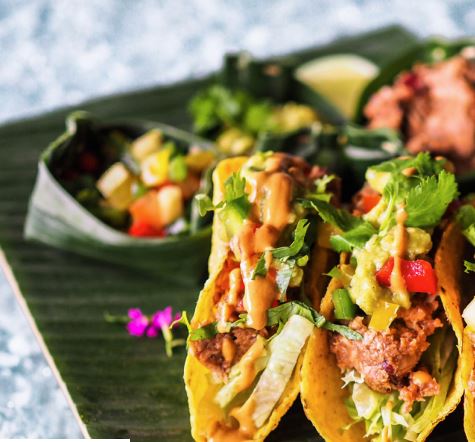Marketing Plant Based Foods
Reprinted with the kind permission of The Good Food Institute
Plant-based meant alternatives are being eaten by a wide variety of people, many of whom also eat animal proteins. Restaurants can take advantage of this macro-consumer shift by ensuring that they have at least one or two appealing plant-based items on their menu. The best approach is having a variety of protein options available for most dishes.
HOW YOU ORGANIZE YOUR MENU MATTERS
Most consumers are looking for familiar foods when they dine out, so marketing plant-based menu entrées should focus on ensuring that these items are integrated into the rest of the menu and that they are labelled with appealing and familiar words. Studies have shown that when plant-based entrées are moved from a “Vegetarian” section of a menu into the general menu, sales more than double.
Given that around twelve percent of consumers eat a vegan or vegetarian diet, in order to appeal to a wider swath of the population, plant-based entrées should be mixed in with other similar menu items.
The World Resources Institute’s Better Buying Lab is currently working with Panera, Hilton Hotels, Stanford University, Unilever, Sodexo, and others to
identify ways to help consumers shift to more plant-based dishes.
When plant-based entrees are moved from a ‘Vegetarian section’ of a menu into the general menu, sales more than double.
 Preliminary research conducted by the Better Buying Lab has shown that even terms like meatless and meat-free should be avoided. When consumers are choosing foods in the moment, they don’t want to be reminded of what the food
Preliminary research conducted by the Better Buying Lab has shown that even terms like meatless and meat-free should be avoided. When consumers are choosing foods in the moment, they don’t want to be reminded of what the food
is not; labels should stress the positive aspects of the food — ideally with a focus on flavour. Some restaurants use a subtle letter “v” next to their vegan or
vegetarian items while the other trend is to denote plant-based dishes with a small leaf symbol. These are smart ways to let diners who eat a vegan or vegetarian diet know which menu items they can order while at the same time not alienating consumers who eat all kinds of foods.
HOW YOU DESCRIBE PLANT BASED ENTRÉES MATTERS
Plant-based dishes can taste as good as or better than ones that use ingredients from animals, however they aren’t always described in a way that
makes them sound appealing or appetizing.
A study conducted at Stanford University and released in June 2017 by JAMA Internal Medicine tested the naming of vegetables in a dining hall context and concluded that labelling them in decadent terms (e.g. “Sweet sizzlin’ green beans and crispy shallots”) increased their selection by 41% versus healthy restrictive terms (e.g. “light ‘n’ low-carb green beans and shallots”)
Using positive, indulgent language that emphasizes taste and flavor seems to be much more effective than positioning dishes as the “better” choices.
Even though consumers may indicate a desire to eat healthy foods and even though a dish may indeed be quite healthy, indulgent descriptors will increase the likelihood of it being ordered and will increase satiety in the consumer as well.
